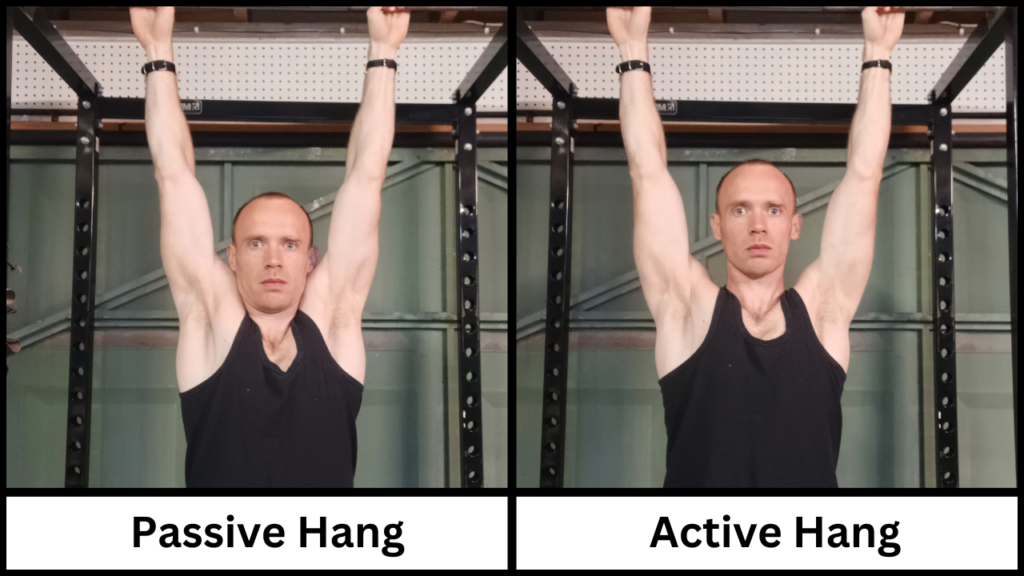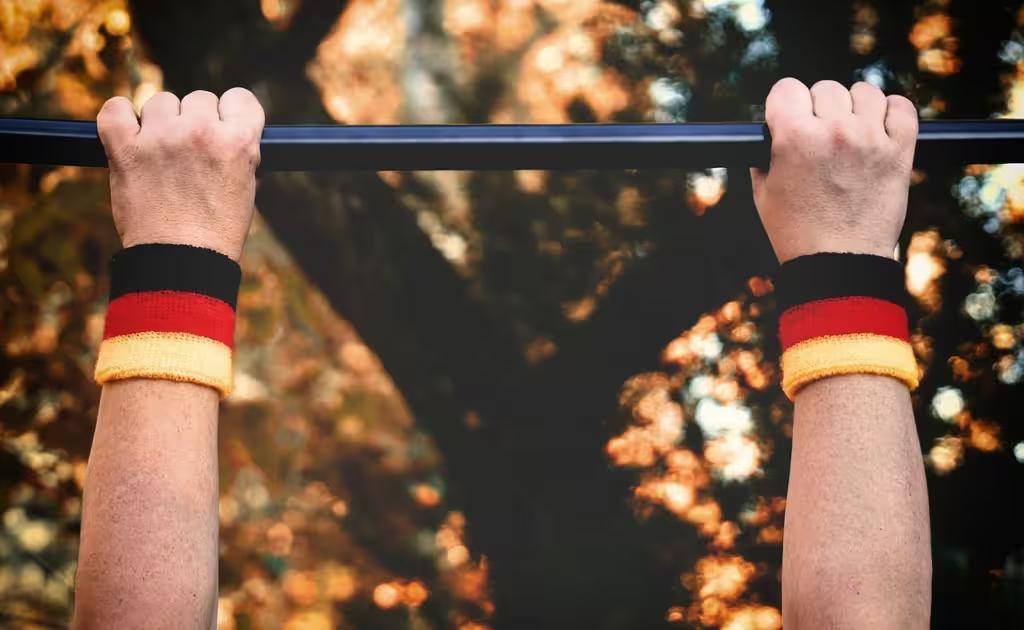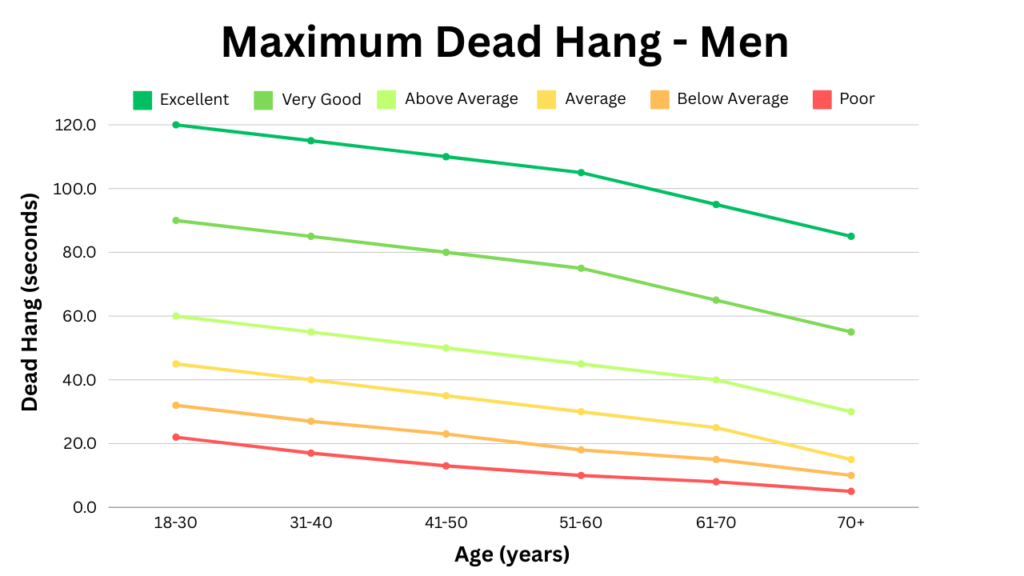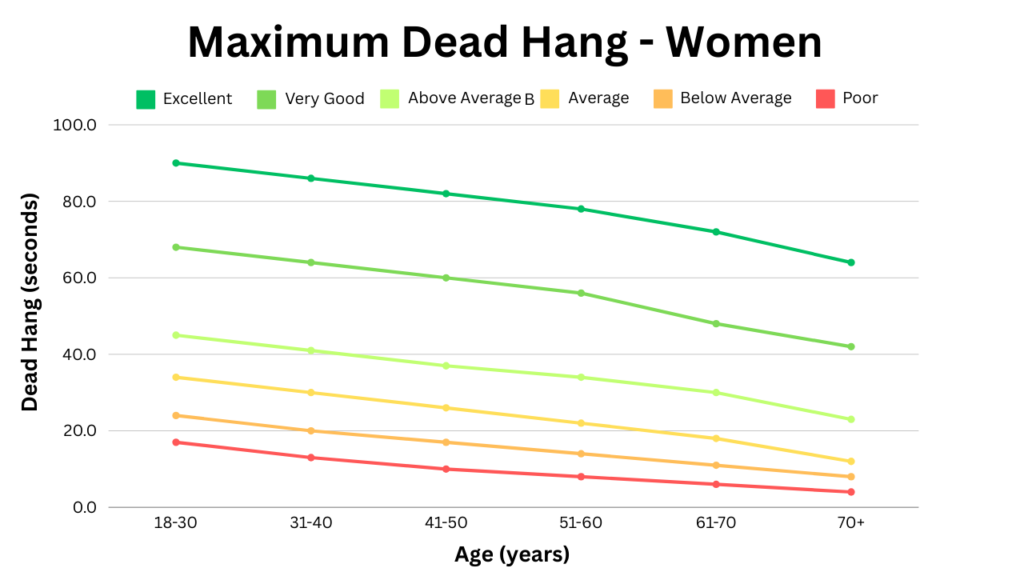It’s often said that grip strength is one of the strongest predictors of longevity. It is a good indicator of overall upper limb function and strength, as well as bone density. A related marker of grip strength is grip endurance. Here it is not about the single highest force you can create, but rather how long you can sustain moderate to high effort levels. The test? Hanging from a bar, known as a dead hang.
How to Measure Your Grip Endurance
The exercise used to test your grip endurance is called the dead hang. This involves hanging with your whole body off the ground, gripping only with the hands. You are looking to hold for the longest possible time without a rest.
While there are various ways you can position your hands, the standard hand position would be double overhand, meaning both palms facing forward. Whether you relax into the hang, or opt for an “active” hang where your shoulders are actively pulling, is down to personal preference. For training purposes, an “active” hang is better for strengthening the other muscles involved.

It helps to have a partner who can time you, though it’s possible to time yourself. One option is to film yourself, allowing you to watch back the footage when you have access to a timer (or check the video timestamps). Another is to have a timer running where you can see it, and to note when you start and end your hang. For example, if the clock is at 00:15 when you start and 1:32 when you stop, then your dead hang was 1:17. Start the timer when both feet are off the ground, and stop as soon as either foot touches the ground again.
Equipment
The pull up bar in a gym or a secure doorframe bar at home are the best options for this test. If you’re lucky enough to have outdoor gym equipment in your local park, it may include a pull up bar. An alternative might be a climbing frame or monkey bars. I wouldn’t advise you attempt this with a tree branch or any object too large to wrap your thumb round, as this will negatively impact the hang time.

Warming Up
The intensity of a dead hang is likely low enough that it doesn’t require too much of a warm up. I would advise something simple like the following:
- Arm circles, forward x 10
- Arm circles, backward x 10
- Alternating between spread out fingers and making a fist x 10
- Shoulder shrugs x 10
- Alternating between spread out fingers and making a fist (again) x 10
- Wrist rolls x 5 each direction
Below you can see this example warm up being demonstrated, followed by a 30 second dead hang.
Motivation
One criticism of endurance testing is that it relies quite heavily on motivation. There will be a level of discomfort that comes towards the end of the hang, where motivation will be a factor. If you choose to track over time there will also be a desire to equal or surpass your previous time.
While it’s worth acknowledging this issue, ultimately it may only make a difference of +/-20%. Based on the grip endurance standards below, you are likely to differ by no more than one rating if you are highly motivated or unmotivated. This feels like a reasonable margin of error but is worth considering when you plan to complete the challenge.
What Do My Results Mean?
There don’t appear to be any large scale research studies of dead hang times in the general population. However, aggregating available information and factoring in the known differences due to age and sex, I’ve come up with the following charts.

It seems fair to say that a 2 minute dead hang is “excellent”, and that this doesn’t decline much until the age of 60. I’ve also set “average” to be 45 seconds, with a similar steady decline with age.

For women, I’ve taken the same relative difference of ~25% seen in other metrics and applied it here. That leaves “excellent” at 90 seconds for the youngest age group, and 34 seconds for “average”.
Tracking grip endurance over time
While this is a simple test, it depends a lot on access to equipment. If you have a suitable area in which to perform a dead hang, consider completing this test every year. Otherwise, feel free to do so as and when the opportunity arises. Be sure to have a suitable place to log your results each time, such as this companion sheet I designed for people to use.

I’ve completed this test for three years now and my results are relatively stable. Between age 35 and 36 I followed a 30 day hanging challenge, which may explain my improvements. If you are recreationally active and do some sort of resistance training you’re unlikely to need direct grip endurance training. Exercises like deadlifts, pull ups and rows will be enough to improve your grip strength and endurance over time.

